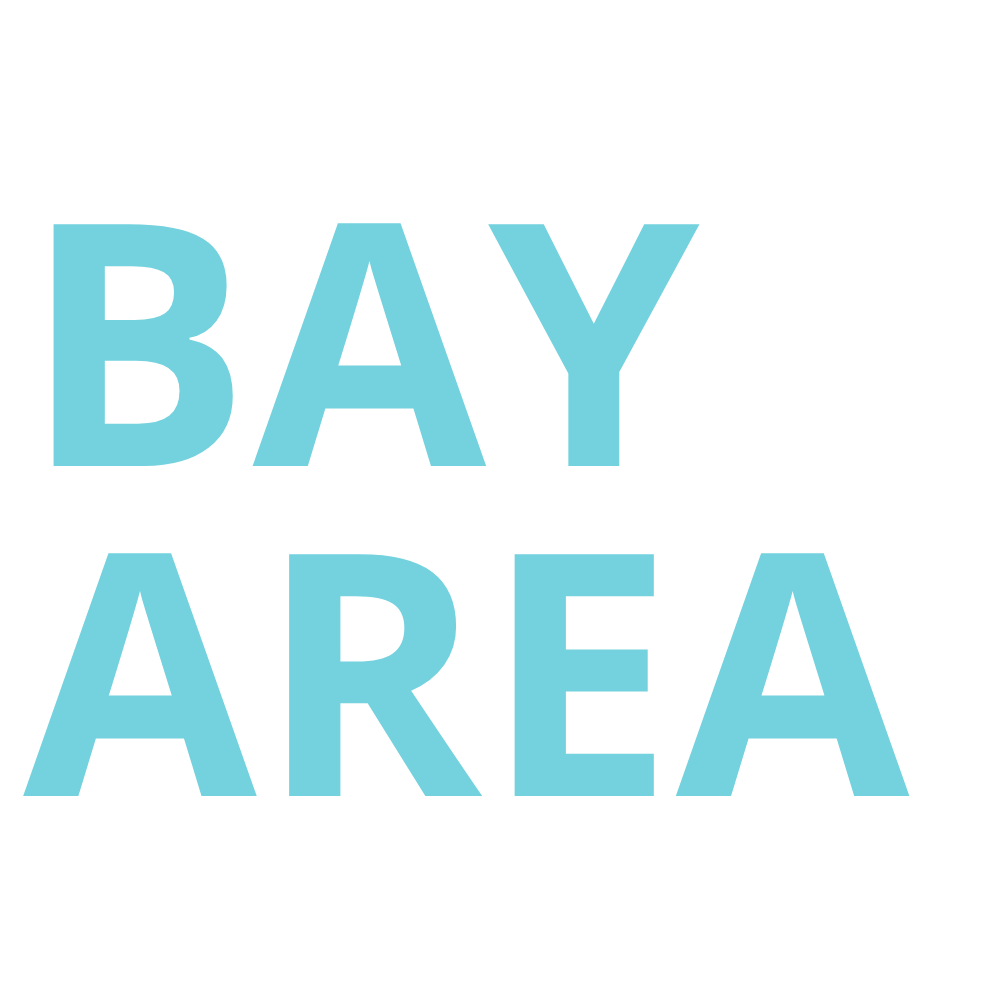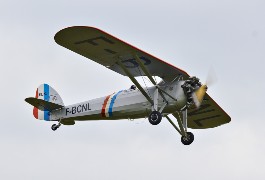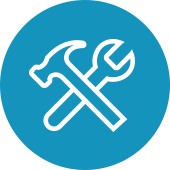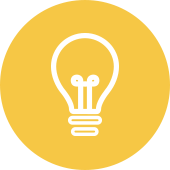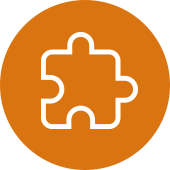Mga spotlight
Aerospace Engineer, Aircraft Engineer, Aircraft Systems Designer, Aerospace Design Engineer, Aeronautical Engineer, Aircraft Design and Development Engineer
Between civilian and military aviation fleets, there are ~220,000 aircraft in the United States alone – and that’s just a tiny fraction of the total number worldwide! Every year, many of these aircraft designs are reviewed and updated to make improvements using the latest information in aerodynamics, materials science, structural analysis, and propulsion. This complex work is performed by expert Aircraft Designers, in collaboration with engineers, manufacturers, and government agencies.
From commercial airplanes and military jets to helicopters and unmanned aerial vehicles, Aircraft Designers address challenges like boosting fuel efficiency, enhancing performance, reducing noise, and improving structural integrity and safety. They must also, of course, ensure designs are feasible and compliant with regulations.
Once initial designers are approved, Aircraft Designers use sophisticated software tools for modeling and simulation to test their designs under hypothetical conditions before physical prototypes are built. It can take several years for a new “clean sheet” design to develop from the concept stage to actual production and use in the real world.
- Working on innovative, high-performance aircraft designs
- Contributing to advancements in aviation technology
- Opportunities to work on a variety of projects
- Collaborating with a multidisciplinary team of experts
Oras ng trabaho
- Aircraft Designers typically work full-time, often exceeding 40 hours per week. They may need to work extra hours to meet project deadlines or resolve design issues.
Mga Karaniwang Tungkulin
- Participate in reviews of existing designs and provide technical expertise
- Meet with stakeholders to review objectives, budgets, and timeframes for new or revised design projects
- Develop and refine aircraft designs using computer-aided drafting software
- Create detailed technical drawings and documentation
- Coordinate with manufacturing teams to ensure feasibility, efficiency, and adherence to schedules
- Present design concepts to stakeholders. Incorporate feedback and ensure compliance with aviation safety regulations and standards
- Conduct simulations, stress tests, and wind tunnel tests to analyze aerodynamic properties, validate design performance, and evaluate materials for weight, durability, and cost-effectiveness
- Manage design iterations and maintain version control of documentation
- Collaborate with engineers to integrate systems, components, and advanced technologies such as avionics and propulsion systems
- Assess environmental impact and work on eco-friendly design solutions
- Conduct failure analysis and work on improvements for existing designs
Karagdagang Pananagutan
- Engage in continuous professional development through courses and certifications
- Attend industry conferences and workshops to stay abreast of trends
- Collaborate with universities and research institutions
- Publish research findings and contribute to industry journals
- Mentor junior designers. Lead cross-functional teams in large projects
- Provide technical support during the manufacturing and testing phases
- Contribute to the development of company design standards and best practices
- Support marketing and sales teams with technical information
Soft Skills
- Pansin sa detalye
- Komunikasyon
- Pagkamalikhain
- Kritikal na pag-iisip
- Paggawa ng desisyon
- Inobasyon
- pasensya
- Pangungumbinsi
- Pagtugon sa suliranin
- Pagtutulungan ng magkakasama
- Pamamahala ng oras
Teknikal na kasanayan
- 2D graphic design tools: Adobe Illustrator, Photoshop, and InDesign
- Project management software: Microsoft Project, Trello, or Asana
- Collaboration tools: Slack or Microsoft Teams
- Computer-aided drafting and 3D modeling: AutoCAD, CATIA, SolidWorks, Rhino, and Siemens NX
- Paggawa gamit ang computer
- Computer numerical control (CNC) machining
- Electrical systems and integration: Altium Designer, EAGLE, and Mentor Graphics
- Ergonomics and Human Factors Engineering
- Human-Machine Interface design: Sketch, Adobe XD, or Axure RP
- Knowledge of materials: metals, composites, plastics, and their use in manufacturing processes
- Mga hadlang sa paggawa at mga prinsipyo sa pagmamanupaktura
- Photorealistic rendering and animations: KeyShot, V-Ray, or Lumion
- Product lifecycle management: Siemens Teamcenter or PTC Windchill
- Aviation regulatory standards and compliance
- Simulation software: ANSYS, Simulink, and MSC Nastran for structural integrity, aerodynamics, and crashworthiness testing
- Sound design and acoustics: EASE or SoundPLAN
- Surface modeling: ICEM Surf or Alias Surface
- Sustainability at eco-design
- Technical drawing and modeling: Alias, Blender, and DraftSight
- Vehicle dynamics and engineering: aerodynamics, structural analysis, propulsion systems, and avionics
- Virtual and augmented reality tools: Unity, Unreal Engine, or Autodesk VRED
- Aerospace manufacturers and suppliers
- Commercial airlines
- Mga kontratista ng depensa
- Institusyong pang-edukasyon
- Engineering and design firms
- Mga ahensya ng gobyerno
- Private aerospace companies
- Research and development firms
Aircraft Designers work on cutting-edge projects in dynamic work environments. They must collaborate with teams to produce highly accurate, reliable designs that comply with stringent safety and performance standards. The role demands meticulous attention to detail and continuous professional development to keep up with evolving aviation technology and regulations.
The job can require long hours sometimes, and the pressure to meet exacting standards is tough on some workers. Many designers, however, love the blend of technical challenges and creative opportunities. They find great satisfaction in seeing their designs come to life, especially after years of hard work.
A major trend in aircraft design is the use of lightweight composite materials offering reduced weight and improved fuel efficiency. Another trend is the development of electric and hybrid propulsion systems promising quieter, cleaner, and more efficient alternatives to traditional engines. Advanced avionics and automation technologies are also transforming the design industry while boosting safety and reducing pilot workload. Designers must keep up with these and other advancements during the design process to help enhance sustainability.
Aircraft Designers often enjoyed building and flying model airplanes, experimenting with design and mechanics, and engaging in STEM-related activities such as science fairs and robotics clubs.
- Aircraft Designers usually have a bachelor’s (or in some cases, a master’s) degree in aerospace engineering, mechanical engineering, or a related field
- Some students major in mechanical engineering with a minor in aerospace engineering
- Completing a dual bachelor’s/master’s program may help save time and money
- Note, that some designers aren’t engineers. They come from an industrial design background but work closely with engineers to ensure designs are technically feasible
- For those without engineering degrees, specialized courses and certifications may provide sufficient technical knowledge, along with practical industry experience via internships, co-op programs, or hands-on projects
- As noted by Flying Magazine, “Most positions require a bachelor’s degree within a broad range of engineering or science fields in addition to aeronautics or astronautics, such as mechanical, electrical, structural, materials and even civil engineering. Other jobs might require training in systems safety, human factors, air-vehicle integration or aesthetic design. Most people entering the field are expected to have CAD/CAM and CNC training and capability.”
- Relevant coursework for aspiring aircraft designers includes:
- Aerospace Structures
- Aerodynamics
- Propulsion Systems
- Aircraft Performance and Design
- Flight Mechanics
- Avionics Systems
- Materials Science for Aerospace
- Computational Fluid Dynamics (CFD)
- Finite Element Analysis (FEA)
- Aircraft Systems and Control
- Engineering Design Principles
- Safety Standards and Regulations in Aviation
- Sustainable Design at Eco-Friendly na Mga Kasanayan
- Teknikal na Pagguhit at 3D Modeling
- Virtual at Augmented Reality sa Disenyo
- Internships or co-op programs provide invaluable practical experience and hands-on learning opportunities
- Optional certifications that can enhance one’s credentials include:
- Additive Manufacturing Certification
- Aircraft Certification Specialist
- AS9100 Certification (certification in Aerospace Quality Management Systems)
- Certified Aerospace Technician
- Certified CAD Professional
- Certified CATIA Associate
- Certified Composites Technician
- Certified Professional Engineer
- Sertipikadong SolidWorks Professional
- Certified Systems Engineering Professional
- Project Management Professional
- Six Sigma Certification
- Sustainable Design Certification
- Staying current with evolving technologies and regulations is essential and can be done via professional development workshops or courses
- Joining professional organizations such as the American Institute of Aeronautics and Astronautics or the Society of Aerospace Engineers can provide networking opportunities and access to industry events
- Magpasya sa isang format ng programa (sa campus, online, o hybrid) na nababagay sa iyong mga pangangailangan.
- Seek an ABET-accredited program at a school with strong aerospace engineering, mechanical engineering, or programs, well-funded labs, research opportunities, internships, and co-op programs with industry partners.
- Timbangin ang halaga ng matrikula laban sa magagamit na tulong pinansyal at mga pagkakataon sa scholarship.
- Tayahin ang mga kwalipikasyon ng mga guro at mga nagawa ng alumni.
- Isaalang-alang ang mga resulta pagkatapos ng pagtatapos tulad ng mga rate ng paglalagay ng trabaho.
- Focus on art, design, and STEM courses like calculus, differential equations, linear algebra, statistics and probability, numerical methods, engineering mathematics, complex variables, physics, and computer science
- Study the history of aircraft designs, problems, and solutions. Review the most innovative designs and why they worked
- Think about the types of aircraft you want to design, or if you just want to focus on a particular component of an aircraft
- Join engineering clubs and take part in science fairs and competitions
- Seek internships, part-time jobs, cooperative educational programs, mentorship opportunities, or apprenticeships in design studios or aircraft manufacturing plants
- Subaybayan ang iyong trabaho at akademikong mga nagawa para sa iyong resume at mga aplikasyon sa kolehiyo, at bumuo ng isang portfolio ng mga proyekto at mga karanasan sa pananaliksik
- Stay updated with industry trends and advancements by reading articles in Aircraft Design and other journals, or by watching informational videos
- Reach out to do an informational interview with a working Aircraft Designer. See if you can shadow them at work for a day
- Join online aircraft design-related discussion groups and professional organizations like the American Institute of Aeronautics and Astronautics
- Suriin ang mga post ng trabaho at basahin ang mga paglalarawan ng trabaho upang makita kung ano ang mga kasalukuyang kwalipikasyon at mga espesyalisasyon na hinahanap ng mga employer
- Being a pilot isn’t required to be a successful Aircraft Designer, but having a private pilot’s license could show commitment to the aviation industry
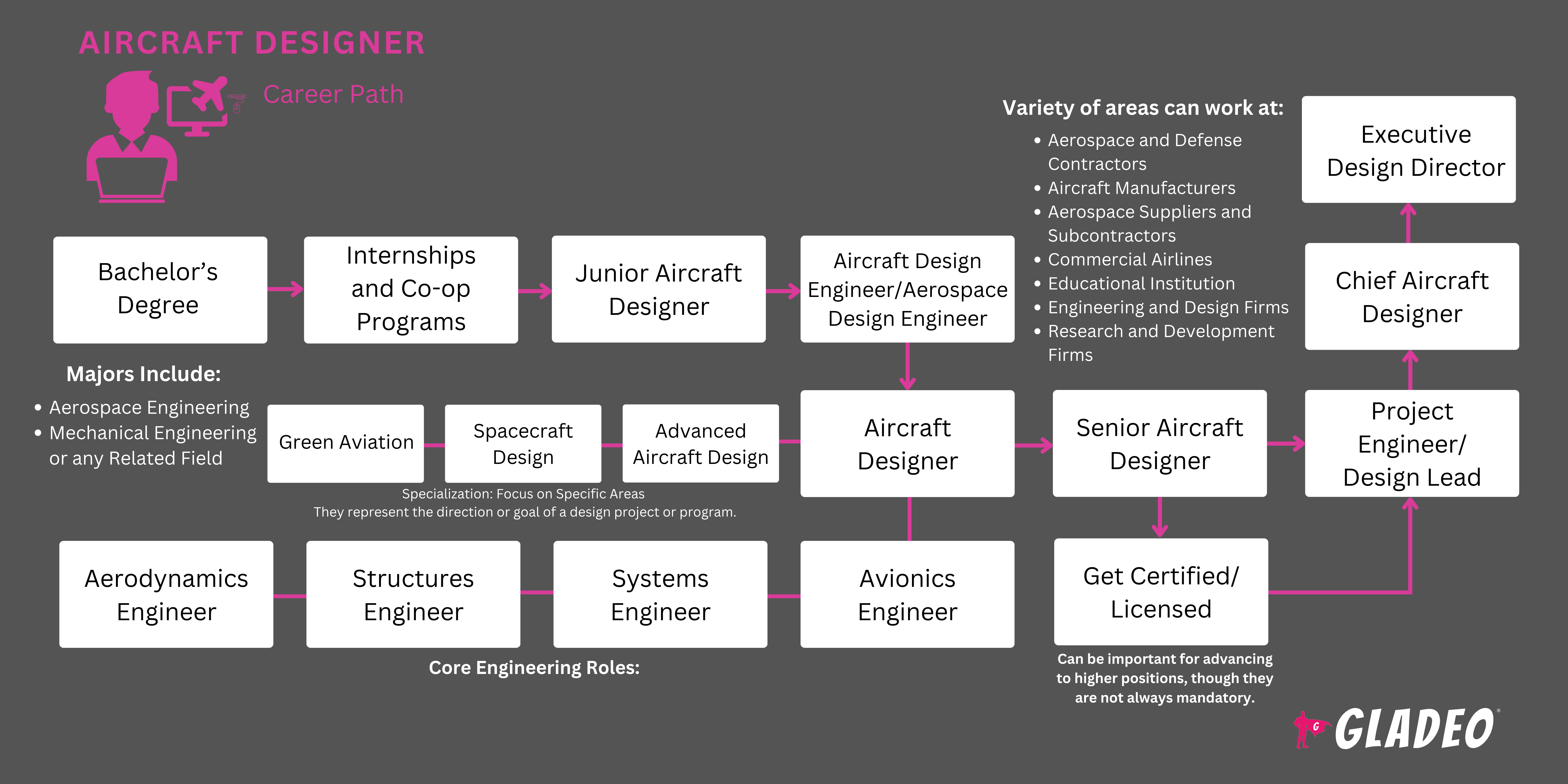
- Jobs like these are often found through networking, so go to aviation-related events to grow your network
- Make a professional LinkedIn profile and website to showcase your work
- Magsaliksik ng mga potensyal na employer at bisitahin ang kanilang mga pahina ng karera para sa mga bakanteng trabaho
- Top employers of aircraft designers in America include Boeing, Lockheed Martin, Northrop Grumman, Raytheon Technologies, General Dynamics, NASA, Gulfstream Aerospace, Textron Aviation, Blue Origin, and SpaceX
- Note, you may have to relocate to be close to where the jobs are!
- Be patient. Apply for internships, apprenticeships, co-op programs, and entry-level positions
- Tanungin ang iyong tagapamahala ng programang pang-akademiko kung mayroon silang kaugnayan sa mga lokal na employer o recruiter
- Galugarin ang mga listahan ng trabaho sa mga portal gaya ng Indeed , LinkedIn , at Glassdoor
- Use an Aircraft Designer resume template to get ideas for formatting and phrasing
- Isama ang mga nauugnay na keyword ng resume gaya ng:
- 3D Modeling
- Advanced Composites
- Aerodynamics
- Aerospace Engineering
- Aircraft Systems Integration
- Computer-Aided Design
- CATIA
- Flight Mechanics
- Agham ng Materyales
- Mechanical Engineering
- Product Lifecycle Management
- Propulsion Systems
- Prototyping
- Pagsunod sa Regulasyon
- SolidWorks
- Stress Analysis
- Thermal Analysis
- Wind Tunnel Testing
- Gumawa ng digital portfolio na nagpapakita ng iyong mga proyekto at kontribusyon. Idetalye ang iyong mga tungkulin, kasanayang ginamit, at ang epekto ng iyong trabaho
- Prepare for interviews by brushing up on relevant terminology and trends
- Magtanong sa mga dating superbisor at propesor sa kolehiyo para sa mga sanggunian o mga sulat ng rekomendasyon
- Gamitin ang career center ng iyong unibersidad para sa tulong sa resume, mock interview, at job fair
- Review potential job interview questions, such as “What techniques do you use to ensure your designs are both aesthetically pleasing and functional?” or “How do you incorporate feedback from stakeholders into your design process?”
- Manatiling may kaalaman tungkol sa industriya. Maging handa na talakayin ang mga uso at teknolohiya sa panahon ng mga panayam
- Magsuot ng propesyonal para sa mga panayam sa trabaho
- Talakayin ang mga pagkakataon sa pagsulong sa iyong superbisor
- Magboluntaryo para sa mga mapaghamong proyekto upang ipakita ang iyong kakayahan at kakayahang umangkop
- Aktibong humanap ng karagdagang edukasyon at pagsasanay upang makinabang ang iyong karera at employer
- Manatiling napapanahon sa pinakabagong software, tool, at pamamaraan
- Consider specialized certifications such as Aircraft Certification Specialist, AS9100 Certification, Certified Aerospace Technician, Certified CAD Professional, or Certified Professional Engineer
- Knock out your graduate degree to deepen your expertise
- Explore different areas within Aircraft Design to broaden your expertise. For example, if you usually only work on airplanes, try designing helicopters or drones
- Maglakbay sa ibang mga bansa upang malaman ang tungkol sa kanilang mga programa sa disenyo at istilo. Pag-aralan ang gawain ng mga nangungunang taga-disenyo ng industriya
- Bumuo ng matibay na relasyon sa mga kasamahan, manager, at stakeholder
- Mentor junior colleagues or interns to develop leadership skills
Consider switching employers to advance your career. Move to cities known for aircraft manufacturing jobs such as Seattle, Washington; Wichita, Kansas; Fort Worth, Texas; Savannah, Georgia; Mobile, Alabama; and Long Beach, California - Panatilihing aktibo sa mga propesyonal na asosasyon upang mapalago ang iyong network at reputasyon. Pumunta sa mga kumperensya, magboluntaryong maglingkod sa mga komite, at mag-ambag ng mga iskolar na artikulo sa mga journal o publikasyon ng industriya
Mga website
- Aerospace America
- Aerospace Industries Association
- Aerospace Manufacturing and Design
- Aerospace Testing International
- Airbus Technical Publications
- Samahan ng mga May-ari ng Sasakyang Panghimpapawid at Pilot
- American Institute of Aeronautics at Astronautics
- American Society of Mechanical Engineers
- Association for Uncrewed Vehicle Systems International
- Aviation Week & Space Technology
- Boeing’s Innovation Quarterly
- Canadian Aeronautics and Space Institute
- Defense Advanced Research Projects Agency
- Defense News
- European Space Agency
- Samahang Pang-eksperimentong Sasakyang Panghimpapawid
- Federal Aviation Administration
- Flight International
- Institute of Aeronautics and Astronautics
- Institute of Electrical and Electronics Engineers Aerospace and Electronic Systems Society
- Institute of Mechanical Engineers
- International Council of the Aeronautical Sciences
- International Council on Systems Engineering
- International Journal of Aerospace Engineering
- Journal of Aerospace Engineering
- Journal of Aerospace Information Systems
- Journal of Aircraft
- Journal of Propulsion and Power
- Journal of Spacecraft and Rockets
- National Aeronautics and Space Administration
- Royal Aeronautical Society
- Society of Aerospace Engineers
- Ang Aerospace Corporation
- Vertical Flight Society
Mga libro
- Aerodynamics for Engineers by John Bertin and Russell Cummings
- Aircraft Design: A Conceptual Approach, by Daniel P. Raymer
- Introduction to Flight, by Mary Bowden and John Anderson
Aircraft Design is a rewarding and potentially lucrative career option, but it can be a tough field to break into. If you’re curious about jobs that require some similar skills, consider our list below!
- Advanced na Driver-Assistance Systems Engineer
- Aerospace Engineer
- Automotive Aerodynamics Engineer
- Automotive Ergonomics Specialist
- Disenyo ng Sistema ng Kaligtasan ng Automotive
- CAD Technician
- Artista ng Konsepto
- Digital Modeler
- Electrical Engineer
- Engineer ng Electric Vehicle (EV).
- Inhinyero ng Pangkapaligiran
- Inhinyero ng Fuel Cell
- Grapikong taga-disenyo
- Human Factors Engineer
- Industrial Designer
- Manufacturing Engineer
- Siyentista sa Materyales
- Mechanical Engineer
- Mechatronics Engineer
- Inhinyero ng Proseso
- Taga-disenyo ng Produkto
- Siyentipiko ng Pananaliksik
- Robotics Engineer
- Safety Engineer
- Inhinyero ng Thermal Systems
- Transmission Engineer
- User Experience (UX) Designer
- Inhinyero ng Dinamika ng Sasakyan
- Espesyalista sa Virtual Reality (VR).
Newsfeed

Mga Tampok na Trabaho

Mga Online na Kurso at Tool

Mga Inaasahan sa Taunang Sahod
New workers start around $101K. Median pay is $139K per year. Highly experienced workers can earn around $174K.
Mga Inaasahan sa Taunang Sahod
New workers start around $72K. Median pay is $132K per year. Highly experienced workers can earn around $170K.
Mga Inaasahan sa Taunang Sahod
New workers start around $78K. Median pay is $86K per year. Highly experienced workers can earn around $109K.


